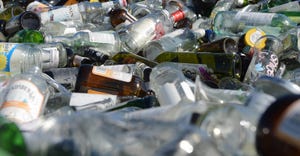Oregon County to Make Money Importing Medical Waste
Marion County, Ore., is adding a new imported medical waste stream to ensure the Covanta Marion WTE plant continues to run at full capacity.
Covanta Marion Inc. has been turning solid and medical waste from Marion County, Ore., into energy for decades, but now the facility will be getting a boost in the form of imported medical waste.
The facility is owned and operated by Covanta Marion Inc., a subsidiary of Covanta Energy Inc. and contracts with Marion County to treat its medical and municipal solid waste. At its most efficient, the facility treats 550 tons of waste per day and generates 13.1 megawatts of renewable energy, according to a county press release. The plant produces enough energy to power the city of Woodburn, Ore., population 24,000.
As the county does not generate enough waste to keep the facility operating at full capacity, it has been purchasing approximately 15,000 tons per year of solid waste from outside the county. But that is about to change.
To offset the solid waste it had been purchasing, the county is adding the medical waste stream to ensure the Covanta Marion plant continues to run at full capacity and efficiently generates electricity.
Following an amended contract in late June between the county and Covanta, the facility will begin slowly accepting more medical waste at the WTE facility in Brooks, Ore. The contract change has increased the amount of medical waste treated at the plant from 1,500 tons to 15,000 tons annually.
“It has been approved by the county and there will be a slow ramp up,” says Covanta Director of Communications James Regan.
This new medical waste stream is being transported by Illinois-based Stericycle Inc. from the states of California and Washington.
“The facility will still be processing primarily municipal solid waste,” says Regan. “The medical waste will be just a small portion of that.”
Initially, Covanta is accepting 3,510 tons (the lower volume) of medical waste from Washington. That tonnage will generate approximately $789,000 for the county.
When both the county and Covanta agree the process of treating the waste from Washington is working well, the facility will begin accepting blue and grey bin waste from California (up to 11,700 tons). Upon full implementation, Marion County could receive up to $3.4 million annually to support solid waste operations, capital improvements and waste reduction efforts - including its composting and recycling programs.
The facility will be accepting up to 5,000 tons of the blue bin waste, which is non-hazardous pharmaceutical waste, and 10,000 tons of grey bin waste, which is biological waste that specifically excludes fetal tissue, hazardous and radioactive waste, and anatomical parts that do not emanate from surgery, laboratory or obstetrical procedures, and large animal carcasses.
“This waste is classified as must combust,” says Regan. “There just aren’t many outlets for this material on the West Coast. We are going to be taking medical waste from Washington and California. It makes sense, as it’s centrally located and they won’t have to transport it all over the country to process it.”
The “must combust” designation is given to this type of medical waste under national health and safety standards. It cannot be sterilized by other processes.
In 2014, the county stopped accepting medical waste from British Columbia when newspapers suggested that the facility had been receiving fetal tissue as part of medical waste shipments to the plant. Regan says the county and Covanta have regular audits and safeguards in place and will ensure those materials are not part of the new medical waste shipments.
Because the waste stream is offsetting existing waste, there will not be an increase in emissions or in ash managed by the county. For the past two years, ash from the Covanta facility is being delivered to Coffin Butte landfill in Corvallis for use as daily ground cover.
The Covanta contract amendment provides for a maximum of 25,000 tons of medical waste. However, any contracts in addition to Stericycle. will require prior county approval, allowing the county and Covanta an opportunity to phase in and monitor the process.
Because the waste is offsetting, environmental impacts should remain the same.
“It will have no effect on emissions,” says Regan. “This facility has been processing medical waste like this for quite a long time and the way we’re doing it, we’re actually not increasing the volume of the waste processed at one time. We are going to be processing it at the same feed rate as we previously had.
We’ve done combined testing when medical waste is being combusted along with municipal solid waste we know that emissions are still way below the state permit,” he says.
About the Author
You May Also Like
.png?width=300&auto=webp&quality=80&disable=upscale)

